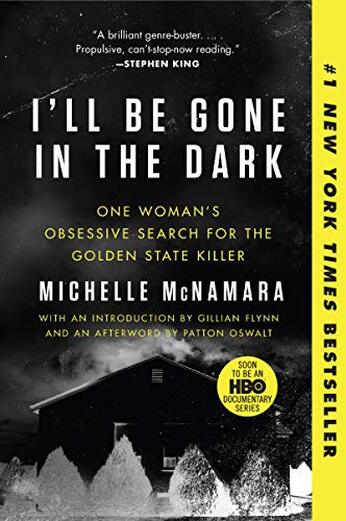 This is my first foray into Lorde’s writing as I don’t typically read poetry. That being said, Lorde’s writing is gorgeous, visceral, and still holds so much truth even close to 40 years after “Sister Outsider” was originally published. That’s really why I wanted to read this, to better understand and educate myself on racism and sexism in a way that I, as a white woman, don’t experience and don’t see the way that black women do, or lesbian POC would experience. I learned so much from this collection of essays and interviews, both about feminism and racism. It took me much longer to get through this relatively short book because I often had to sit with what I just read, to really digest it and hear what Lorde had to say, which is written with incredible passion. But it also took me awhile to finish because the organization of the different essays wasn’t well thought out, and the different essays got a little repetitive.
0 Comments
 It's hard reviewing and rating nonfiction books, especially True Crime. I feel like I say this with every True Crime book I read, but I have yet to be proven wrong about it, so here we are. I’m not rating the crimes themselves, the severity or even how the cases played out in court. I’m simply rating how the author chose to relay the information to the reader. Ann Rule is in a unique position as a True Crime author, as she used to be a police officer, so her books always bring an interesting level of detail to them that’s garnered through first hand experience. Perhaps her most famous book is “The Stranger Beside Me” where she herself was blind to the fact that her friend was Ted Bundy—yes, that Ted. But the “I-5 Killer” is just as tense and intriguing, even when Rule does not have the same personal connection that she did with Bundy. And while the book started off strong—full of tension and horror, it did get bogged down with a type of dry repetition before long.  I won’t lie, I got this book because I am fascinated about true crime; particularly the mindset of these offenders and serial killers. So, of course, I wanted to read the famed “Mindhunter’s” take on a series of cases that are, for all intents and purposes, unsolved to this day. The authors do a great job of analyzing the facts available for these cases, and provide a brief overlook on the kind of person and criminal who would perpetrate such a crime, along with what a law enforcement official would need to do, or look for, before and after the case in order to apprehend the offender. And, for the most part, this book did not disappoint in that regard. I found the authors straight forward—if sometimes dry—presentation to be illuminating when it came to the kind of behaviors and motives that particular killers would show, or how police could have found them “back in the day” had things been different. But, sometimes, one of the authors does let his bias and ego show too much for my tastes.  This true crime reads like a fiction in the best way possible. It’s chilling and horrific, and you keep asking yourself: why don’t more people know about Israel Keyes? The author does a marvelous job of pulling together FBI transcripts, as well as interviews the author—who is an investigative journalist by trade—conducted of the police, Israel’s mother and ex’s, and treats the victims with dignity. This book could have easily been written in more of that news article style with listing sources and full transcripts, and while that wouldn’t have lessened the horrifying way Keyes operated, it would have made the narrative dryer, less of a mystery and thriller, which some people may hate as it can feel like it’s fictionalizing someone’s very real pain, but I really enjoyed it. The story starts at the end, with the final victim that brought the police to apprehend Keyes, even though at the time, they had no clue the kind of monster that they had in their custody. From there, Callahan unravels who Keyes is, his potential victims, and how the prosecutor nearly ruined everything.  I love true crime, and I read and watch a lot of documentaries about different serial killers; some who have been caught and others who took their secrets to their graves. It’s often easy to forget that True Crime is Non-Fiction—that you are reading about someone, or multiple someone’s, very personal tragedy. You get that filter of time where something horrific has occurred a hundred years ago, and it’s easy to forget that these were real people who had something horrendous happen to them. That isn’t the case with “I’ll Be Gone in the Dark”. McNamara never lets you forget that this man, this serial rapist and murderer, is a real person, a real terror that did his prowling up and down California for decades. The people he tormented are still alive, some of them anyway, or their families remain to carry the burden of not having answers as to why, why, why? Until recently. McNamara was obsessive about tracking down clues, weeding through the red herrings of this long standing crime. She didn’t care who caught this man, as long as someone did. She was tenacious and dogged about following leads and working with investigators to follow up on things she found peculiar, but weren’t explored at the time of the crime. Unfortunately, she died half way through writing the book, which is bad for a number of reasons. |
Click the book images to see them on Amazon!
Categories
All
|






 RSS Feed
RSS Feed



















